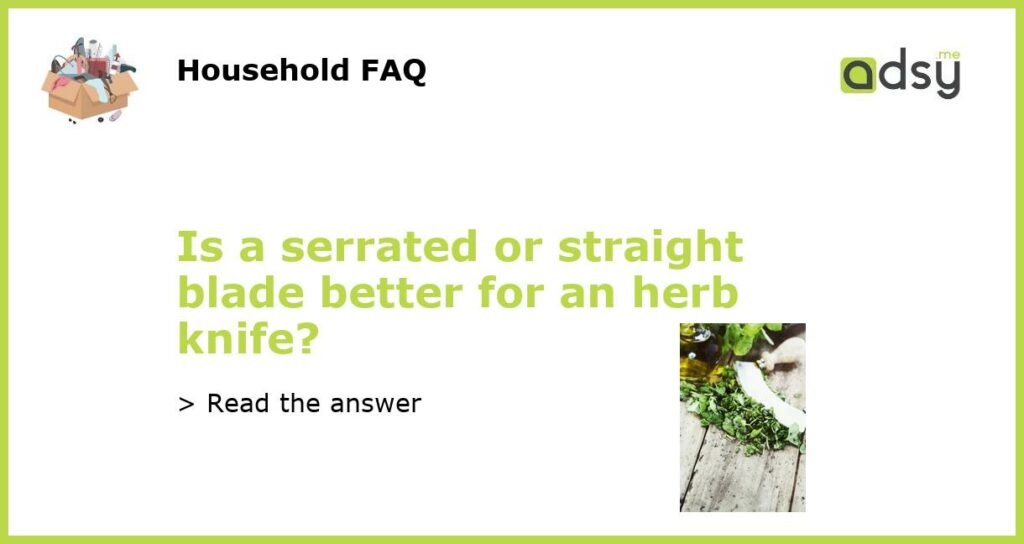Serrated vs. Straight Blade: Which One is Better for an Herb Knife?
Herb knives play an important role in every kitchen, especially for those who love to cook. They are used for mincing, chopping, and slicing herbs and vegetables. However, choosing the right blade can be challenging, as there are two options available – serrated and straight. In this article, we will explore the pros and cons of each type and help you decide which one is better for an herb knife.
What is a Serrated Blade?
A serrated blade has teeth-like indentations along the cutting edge. The teeth help the knife grip and saw through tougher materials, such as bread or meat. However, when it comes to cutting herbs, a serrated blade might not be the best choice. The teeth can damage the delicate leaves and result in a less than satisfactory outcome.
What is a Straight Blade?
A straight blade, on the other hand, has a smooth and sharp edge. It is ideal for precise cuts and can easily slice through herbs without causing any damage. A straight blade is also easier to sharpen, which means you can maintain its sharpness for longer.
Pros and Cons of Serrated Blades for Herb Knives
As mentioned earlier, serrated blades are not the best choice for cutting herbs. However, they do have some advantages that make them useful in other areas. For instance:
- They are ideal for cutting through tougher materials, such as bread, meat, and cheese.
- They stay sharp for longer without the need for frequent sharpening.
- They are less likely to slip or slide during use, thanks to the teeth-like indentations along the blade.
Despite these advantages, serrated blades are not recommended for herb knives, as they can damage the delicate leaves and result in an uneven cut.
Pros and Cons of Straight Blades for Herb Knives
Straight blades are the better option for herb knives, as they offer the following advantages:
- They provide precise cuts that won’t damage the delicate herb leaves.
- They are easier to sharpen and maintain for longer-lasting sharpness.
- They are versatile and can be used for a variety of cutting tasks beyond herbs and vegetables.
One of the disadvantages of a straight blade, however, is that it can be more difficult to control during use, especially for those who are not experienced with knife skills.
When it comes to choosing the best blade for an herb knife, a straight blade is the clear winner. It provides precise cuts, is easy to maintain, and is versatile enough to be used for other cutting tasks. While serrated blades have their advantages, they are not the best choice for herbs, where precision is important. Ultimately, the decision comes down to personal preference and the cook’s level of experience. Regardless of which type of blade you choose, be sure to handle any knife with care and always keep safety in mind.






